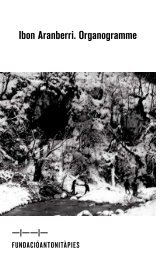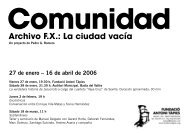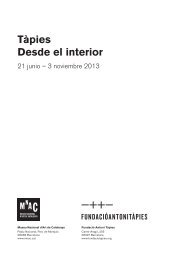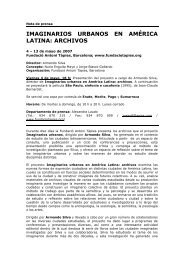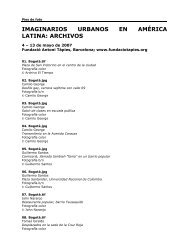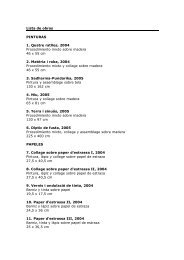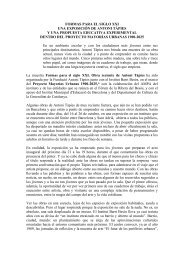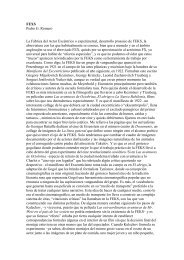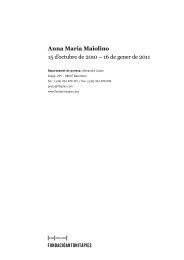COLLECTION - Fundació Antoni Tàpies
COLLECTION - Fundació Antoni Tàpies
COLLECTION - Fundació Antoni Tàpies
Create successful ePaper yourself
Turn your PDF publications into a flip-book with our unique Google optimized e-Paper software.
embenat, 1981) or of bronze (Crani 376, 1987). On the other hand, toward the end<br />
of this decade his interest for eastern cultures is reinforced. This concern had<br />
already incubated during the years after the Civil War and went on to become a<br />
fundamental philosophical influence in his work for its emphasis on materials, for<br />
the identification of man with nature and denial of western dualism. Likewise,<br />
<strong>Tàpies</strong> feels influenced by a new generation of scientists that support a vision of the<br />
universe that understands matter as a whole which is subject to change and<br />
constant formation.<br />
In the 1990s, his interest in eastern art and philosophy increases, as can be seen in<br />
works like Trio (díptic) (1994), an homage to the Japanese monk Sengai and his<br />
teachings. In recent years, <strong>Tàpies</strong> has returned to his origins, with a clear desire to<br />
reaffirm and consolidate criteria. The presence of matter is also renewed in the<br />
works of this period which indicates that everything participates in the continuing<br />
impulse to form, transform or deform which is dictated by the rhythm of the<br />
universe (Dues formes, 1999; Matèria i cartons, 2006). Likewise, the fragmented<br />
body reappears (1/2, 2003) often represented on a larger-than-life scale.<br />
Amplifying a small and simple body, <strong>Tàpies</strong> makes it cosmic. This is one of the keys<br />
that the artist has wanted to show throughout his career.<br />
<strong>Fundació</strong> <strong>Antoni</strong> <strong>Tàpies</strong>. July 2007



